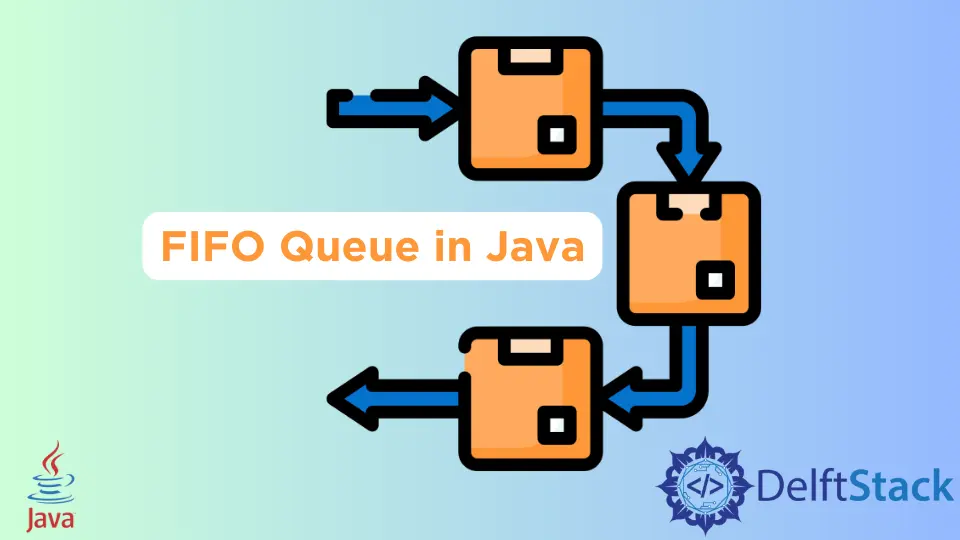Java 中的 FIFO 佇列

佇列是實現先進先出概念的線性資料結構。這個概念意味著先進入的元素最先出來。
代表佇列的技術術語使用前端和後端。元素從後端新增到 Queue 並從前端取出。
這個概念的真例項子是售票櫃檯排,站在第一個位置的人最先拿到票。現在在 Java 中,概念或資料結構在 Queue 介面中實現。該介面存在於 java.util 包中。
下面是演示佇列結構的程式碼塊。
package F10;
import java.util.LinkedList;
import java.util.Queue;
public class Main {
public static void main(String[] args) {
Queue queue = new LinkedList<String>();
queue.add("First");
queue.add("Second");
queue.add("third");
System.out.println("Created Queue: " + queue);
String value = (String) queue.remove();
System.out.println("The element deleted from the head is: " + value);
System.out.println("The queue after deletion: " + queue);
String head = (String) queue.peek();
System.out.println("The head of the present queue is: " + head);
int size = queue.size();
System.out.println("The size of the queue is: " + size);
}
}
有多種方法可以在 Java 中實現 Queue 資料結構。在上面的程式碼塊中,LinkedList 的使用實現了這個概念。
首先,使用 new LinkedList 語句例項化 Queue 引用。add 方法存在於 Queue 介面中,它將指定的元素插入到 Queue 中。附加值時,該函式返回布林值 true。
當由於大小限制而無法新增元素時,該方法可能會丟擲 IllegalStateException。當傳遞的值為空時,它也會丟擲 NullPointerException。當初始元素集被附加到列表中時,佇列就會被列印出來。System.out.println 語句採用需要列印的字串。
接下來,在 Queue 例項上呼叫 remove 函式。它將刪除存在於佇列頭部的元素,因此返回頭部元素。
有一個類似的 poll 函式也可以刪除頭部的元素。唯一的區別在於 remove 函式在 Queue 為空時丟擲 NoSuchElementException。刪除的值儲存在變數中並列印。列印剩餘的佇列以檢查剩餘的元素。
peek 函式檢索佇列中最頂層的元素並且不會刪除它;它是一種檢查佇列頭部元素的方法。當佇列為空時,該函式返回頭部值並丟擲 NoSuchElementException。size 函式存在於 Collection 介面中,並返回集合的大小。因此,此方法列印佇列中剩餘元素的大小。
輸出:
Created Queue: [First, Second, third]
The element deleted from the head is: First
The Queue after deletion: [Second, third]
The head of the present Queue is: Second
The size of the Queue is: 2
Rashmi is a professional Software Developer with hands on over varied tech stack. She has been working on Java, Springboot, Microservices, Typescript, MySQL, Graphql and more. She loves to spread knowledge via her writings. She is keen taking up new things and adopt in her career.
LinkedIn